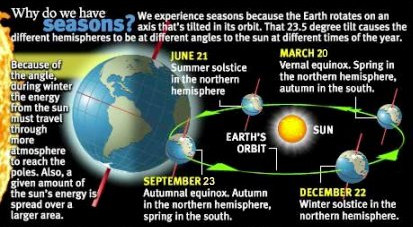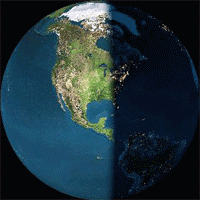
We are now in the waning hours of winter as spring is set to arrive in Thornton later today – at 5:21pm to be exact. The changing of the seasons from winter to spring means longer days, warmer temperatures and a greening landscape.
The Earth experiences seasons thanks to its 23 1/2 degree tilt. As the planet circles the sun, a process that takes 365 1/4 days, different parts of the Earth are tilted closer to or farther away from the sun.
The vernal equinox (the first day of spring) is the day on which the sun is directly over the Earth’s equator and daylight lasts 12 hours in both the Northern and Southern Hemisphere. This is because at this point the Earth’s axis is 90 degrees away from the sun.
From now until the summer solstice, those of us in the Northern Hemisphere get closer to the sun and thus enjoy the warming temperatures and experience spring and summer. In the Southern Hemisphere they experience the opposite and for them today is the first day of autumn.

Here is Colorado, thanks to our northern latitude, we have already passed the point of 12 hours of equal daytime and nighttime, something that occurred just a few days ago. Today in fact daytime will last 12 hours and 7 minutes.
Did you know that there is a difference between the astronomical seasons that we are discussing here and meteorological seasons?
Meteorological seasons differ slightly and are geared toward matching the calendar with the annual temperature cycle. This is done primarily for meteorological observing and forecasting.
For the Northern Hemisphere, the meteorological spring covers the months of March, April and May. Summer brings the hottest months of the year and so meteorological summer is June, July and August. Meteorological fall then is September, October and November followed by the coldest months of December, January and February as meteorological winter.
